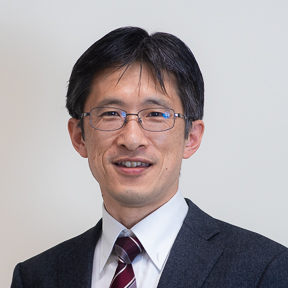
ONO Ryo Professor
Hongo Campus
Graduate SchoolGraduate School of Engineering - Electrical Engineering and Information Systems
DepartmentDepartment of Electrical and Electronic Engineering
Environment & Clean Electric Energy Field
Plasma science
Power engineering/Power conversion/Electric machinery
Measurement engineering
Green Transformation (GX)
Healthcare Technology
Plasma application technology - medicine, surface engineering to aerospace engineering applications
We are engaged in the development of plasma-based medical, surface, energy, and aerospace engineering applications, as well as fundamental research on plasma spectroscopy measurements and simulations.
Research field 1
Spectroscopic measurement and simulation of plasma
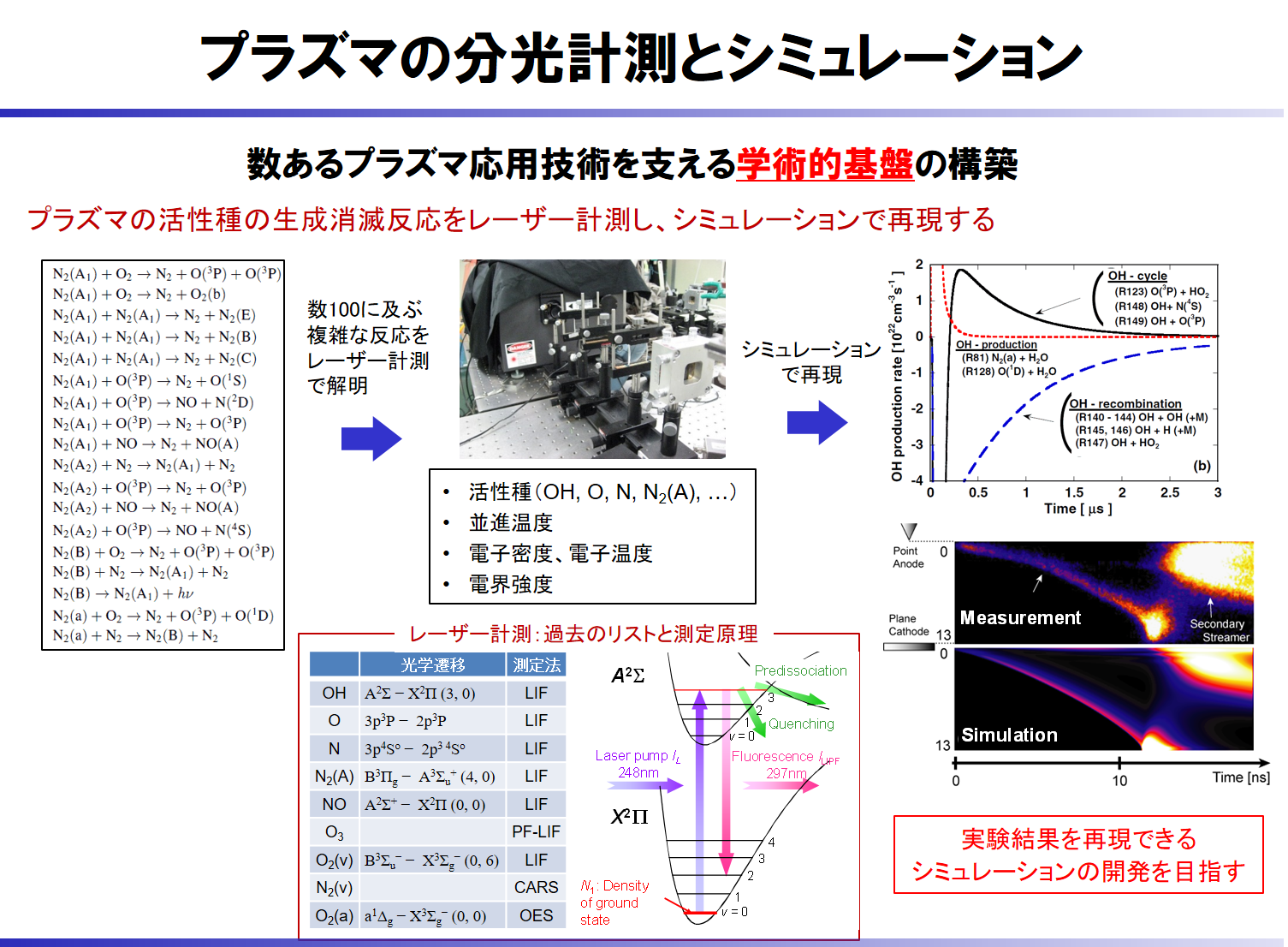
When electrons accelerated by a high electric field collide with gaseous atoms and molecules, ionization occurs and plasma (= ionized gas) is generated. Excitation and dissociation of atoms and molecules also occur, and various excited species and radicals such as OH and O are generated. The generated plasma is highly reactive and is used in various application technologies. Fundamental research on the plasma is important for the development of the plasma application technologies. We have been working on laser spectroscopy to measure various reactive species, which are the core of plasma technologies. The lifetime of reactive species is quite short (1us to 1ms) due to their rapid reactions, so advanced laser measurement is necessary. We are also developing plasma simulations, aiming to reproduce the experimental results with the simulation.
Research field 2
Immunotherapy of cancer using plasma
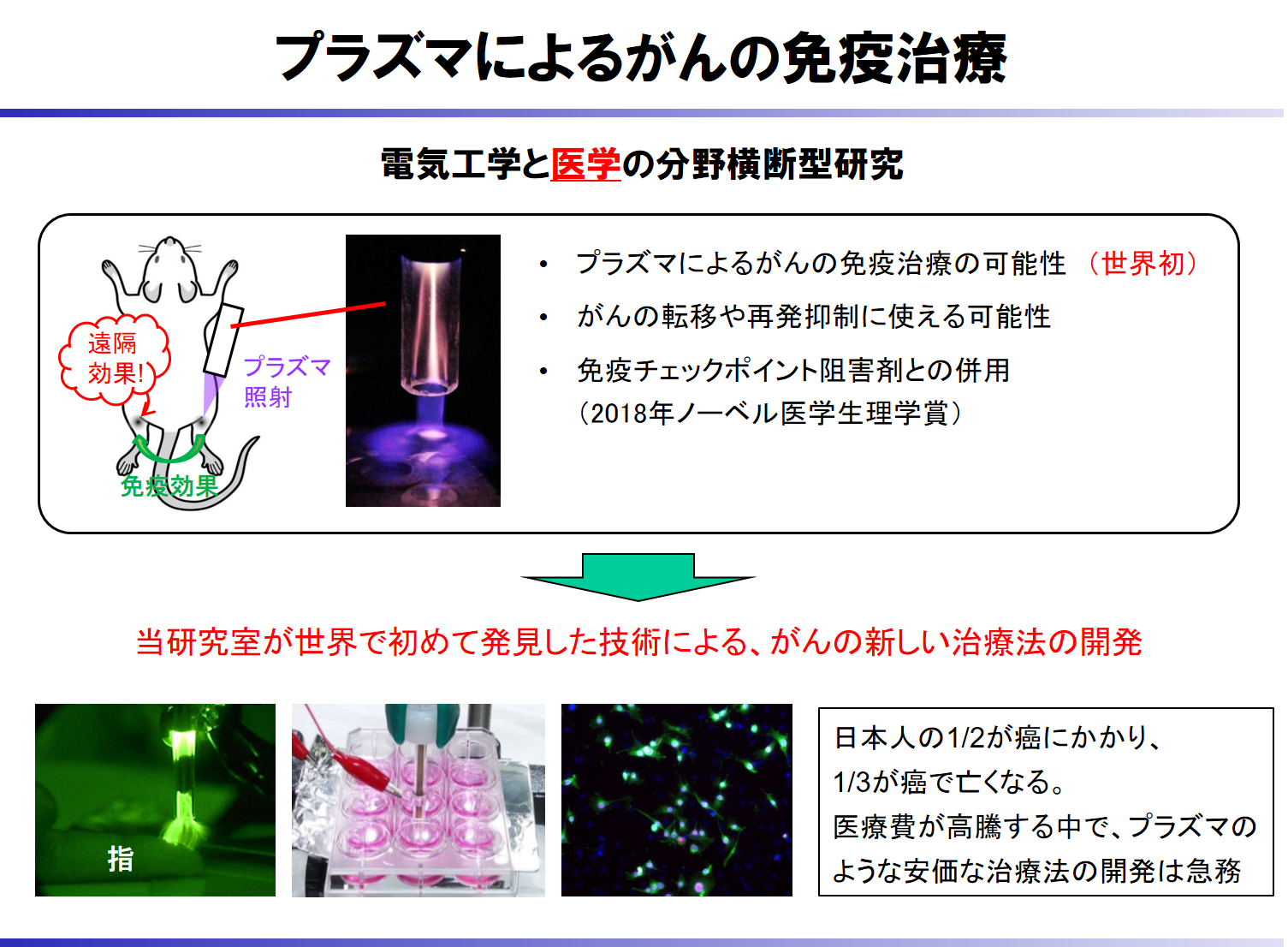
Our laboratory demonstrated the possibility of using plasma for immunotherapy of cancer for the first time. As shown in the figure on the slide, when the plasma was irradiated to one of two tumors, an anti-tumor effect appeared also in the other tumor, and this effect was kept for long time. We have shown that plasma irradiation may enhance the antitumor immunity of mice. This phenomenon is already known in radiotherapy, but the same phenomenon could be achieved using plasma. This plasma-induced antitumor immunity has also shown the possibility of being effective in suppressing recurrence after surgical resection of tumors. We are also conducting experiments in combination with immune checkpoint inhibitors (2018 Nobel Prize in Physiology or Medicine), which are used in immunotherapy for cancer, to obtain synergistic effects. To elucidate their mechanisms, we are measuring the reactive species of plasma and analyzing the immune cells in the tumors irradiated with plasma.
Research field 3
Plasma based fluid control application

When plasma is created in air, electrical charges such as ions and electrons are accelerated by the electric field, creating a flow of air. We use the flow created by this plasma to improve the aerodynamic performance of moving vehicles in general, such as aircraft, cars, trains and drones. Aerodynamic performance refers to the drag and lift forces generated in moving objects, and improving this could lead to the development of safer, more fuel-efficient and faster moving equipment. In particular, the plasma method has a much better time response than conventional methods and therefore has the potential to achieve ultra-high speed control, which has not been possible in the past. Plasma also works effectively in low-pressure environments, so applications such as controlling stratospheric platforms and Mars aircraft are also being considered.
Research field 4
CO2 decomposition and oxygen production in Mars environment
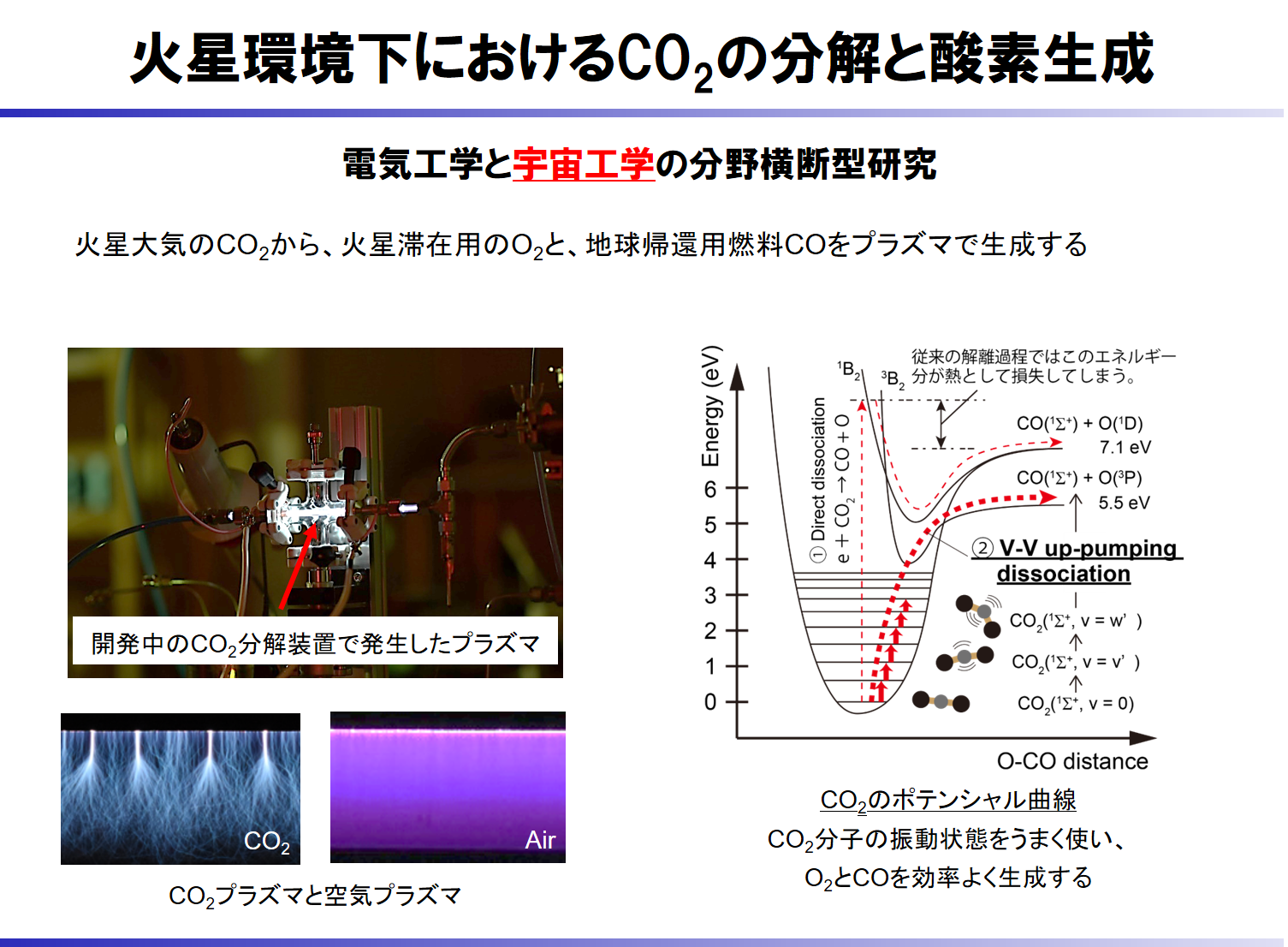
We are conducting research into the production of oxygen and hydrocarbon fuels in the Martian atmosphere with a view to future Mars exploration. In order to send humans to Mars, it is necessary to achieve In-Situ Resource Utilisation (ISRU) using local resources, as it is difficult to transport the oxygen needed to sustain life from Earth to Mars. As the Martian environment has low temperatures (around minus 70 degrees Celsius) and low pressure (around 0.007 atmospheres), the decomposition of CO2 is expected to occur by a different mechanism than on Earth. Our laboratory has a long history of developing gas decomposition technologies using plasma, and we are mobilising all these technologies to elucidate the unique CO2 decomposition mechanisms that occur in the Martian environment and to develop actual devices.
Research field 5
Surface reaction of reactive species and surface treatments
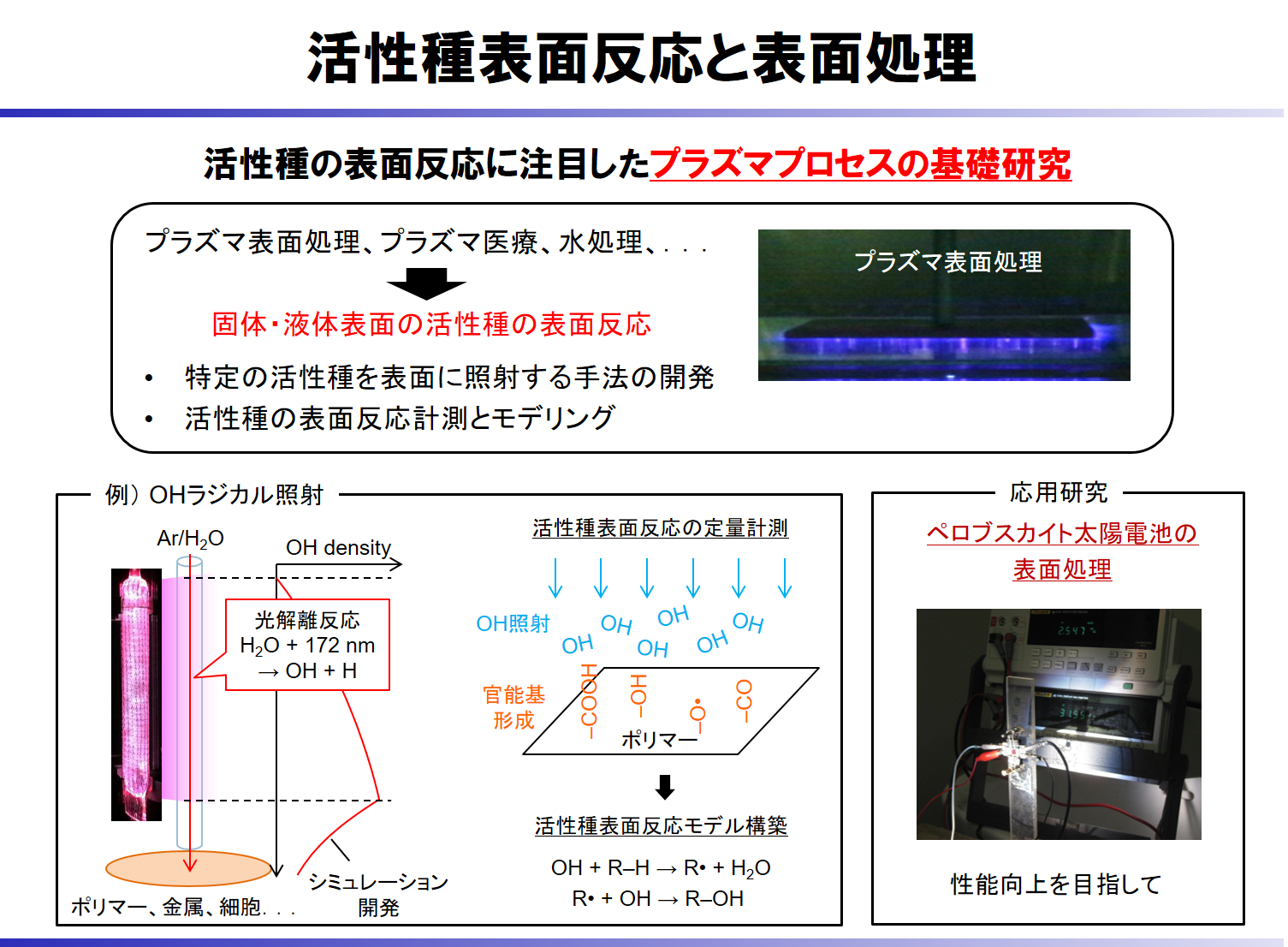
Plasma is used for surface treatment of polymers, semiconductors, metals, liquids, and living organisms. Surface reactions of reactive species are important in these processes, but it is not easy to measure the surface reaction of each type of reactive species. This is because tens to a hundred types of reactive species are generated in the plasma. Measurement of the surface reaction of each type of reactive species is quite difficult. We have developed a method to selectively supply each type of reactive species (OH, O, and others) to the sample surface, and have measured the surface reactions of various reactive species in combination with surface analysis. Based on the results of these measurements and quantum chemical and molecular dynamics calculations, we are constructing surface reaction model of reactive species.